I came across this really awesome book today called ‘The Moon Seems To Change’ written by Franklyn M. Branley, illustrated by Helen Borten, published 1960; it is part of the ‘Lets-Read-And-Find-Out book series.
The great thing about this book is that it is not just a storybook the focus is on knowledge building. It begins by providing comparative information that the child can understand; such as, the moon is bigger than a house or a mountain and then goes on to describe its distance from the earth in terms of time to drive there in a car. As the story progresses the child learns about the topography of the moon, its rotation and climate, how we perceive the moon from earth and why this is so, demonstrates activities the child can perform to aid their understanding and encourages further observations and study.
You, of course, do not need to purchase this book to utilize the concepts that it communicates. However the storybook feel, visuals and simplified information makes teaching this topic a breeze for both adult and child.
Activities For Your Young Scientist…
Most of these activities can be adjusted depending on the child’s abilities. Younger children love to be read to but may not be able to read or write; asking them to tell you or another person about the story is a great way for them to show their learning.
Reading (Science and Language):
Get some books out of the library about the moon and read them together.
Experiment (Science):
Explore the rotation of the moon by slowly turning around on the spot. Next use a person or object to represent the earth and while slowly turning around begin orbiting the ‘earth’.
Explore how the moon seems to change shape. For this you will need a lamp and ball (or your papier mache moon). Using a floor lamp or table lamp on a small table (the lamp should be at the child’s head level) have the child stand with their back to the lamp and hold the ball with outstretched arms slightly above their face level so that the lamp light illuminates the whole face of the ball. This demonstrates the full moon, or the illuminated half of the moon as seen from earth (the child’s head). Next have the child turn to the side with the ball next to the lamp the child can now only see part of the illuminated half on the moon, thus demonstrating the quarter moon as seen from earth. Now turning to face the lamp with the ball between the child’s face and the lamp the illuminated half of the moon cannot be seen at all which means we are not able to see the moon from earth. This demonstrates the new moon (or the first phase of the moons orbit when the Moon and Sun have the same ecliptic longitude).
Drawing or Painting (Art):
Look at the moon or pictures of the moon and then let your child draw or paint what they see.
Writing (Language):
After reading about, or looking at the moon let you child write a story about what they see or have learned.
Spelling (Language):
After reading or writing about the moon select some of the words your child had difficulty with, or that they asked about and incorporate these into their weekly spelling words.
Papier Mache (Art):
Using a balloon (round not oval), old newspaper, glue/paste, a piece of string, an ice block stick/match stick and some grey paint, your child can create a model of the moon. To begin, inflate the balloon and secure it with a tight knot. Tie the piece of string firmly around the balloons knot. Rip the newspaper into small pieces about an inch or two square. Apply the newspaper to the balloon with the glue/paste and leave to dry between layers; you may need to apply 4-6 layers before the papier mache moon is strong enough to support itself (the piece of string is used to hang the balloon from the ceiling while drying so that it doesn’t take up table space). Once fully dry, the balloon can be popped and removed through the string hole. Then retie the string to half an ice block stick or a match stick and insert this into the old string hole, once in, pull gently on the string to secure the stick against the inside. Now all that is left is to paint the moon and hang it up to dry (the balloon can be stood in a small bowl to hold it steady while painting).
Moon Craters (Math and Science):
You will need a ball, sandpit/beach and ruler. Using a heavy ball or a variety of balls like a basketball, baseball or golf ball, drop the ball(s) into the sand to demonstrate how moon craters are formed and how they alter the topography of the moon. Using the ruler measure the height of the rim and depth of the crater made by the different balls and the different amounts of force used.
Compare Distance (Math and Physical Education):
The distance between the earth and moon is 238,900 miles or 384,472 kilometers
#1 Let the child run a Lap and time them. Using the distance they ran, together you can calculate the number of laps they would need to run in order to get to the moon and how long that would likely take.
#2 Have a Moon-Run-(or Walk)-Competition. Set up a lap track with a known distance and let the child run or walk it as often as they like. Let them track their progress by counting the distance to see how many days it takes them to complete the distance to the moon (this could take anywhere from 100-300 days depending on the child). The lap could be around the house, to the park, around a field, to the supermarket, etc.
Moon Journal (Art, Language and Science):
Each night for one month have the child draw a picture of the moon in their moon journal they could also write about what they see, including notes about the weather (is the moon hidden by clouds? What colour is the moon tonight?).
Make a Moon Poster (Art, Language and Science):
Research the moon through books from the library and let the child prepare a poster with interesting facts and information they have learned. They can illustrate the poster with pictures they have drawn or painted.

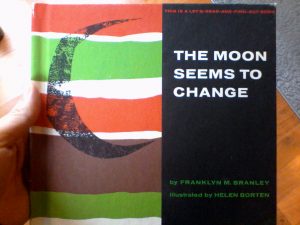
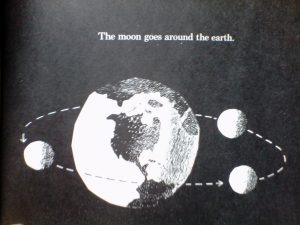
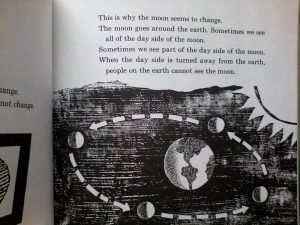
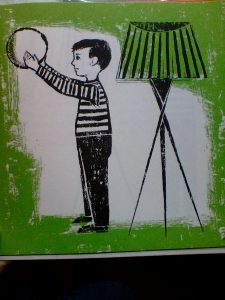
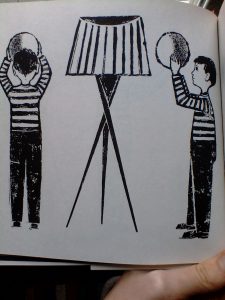
I like the helpful info you provide in your articles. I will bookmark your blog and check again here regularly.
Thank you Brittany, I’m pleased you found this post useful. 🙂
Great article.
love the article. very informative.
Wow, that’s a lot of ideas for one book! thanks for sharing.
Great post. I’m feeling inspired.
Good ideas here. thanks for sharing.
Great article.
Good information.
Have a moon run? What a brilliant idea. I think my little guy will enjoy this.
I enjoyed the read. Lots of great ideas.
Good read. Lots to think about and put into practice. My kids would definitely enjoy a few of these ideas.
Awesome article.
Brilliant post. Really great stuff here.
Neat article.
Cool post, I bet these ideas could be used to expand on books in almost any topic.
Some really good ideas here. thanks
Great article, love your blog.
Great article. I think I’ll try a few of these suggestions with my own class.
I’m a strong believer in encouraging kids to be observant and communicate what they see in written form. Great article.
All good ideas!
Very creative thinking; gives me a lot to think about. Thanks
Wow! great ideas all round. Thanks
Great stuff!
Definitely some food for thought here. Thanks
Great post!
Cool book.
With thanks! Valuable information!
Thank you Saundra.
Excellent article. I have attempted to blog on third party platforms, it just did not transpire how I needed it to. But your website looks nice.
Thank you for your comments Sophie. I felt the same way when I first set up my blog. But now I’m more just writing mainly for myself as a kind of therapy I guess. lol. Definitely keep trying if you enjoy writing!
Neat suggestions, will make a great school holiday project for my grandson. You have some really good articles here.
Thank you for your comment Patricia. I hope you and your grandson have a blast together.
I’m a huge fan of astronomy but I can’t seem to find this book anywhere. I’ve found one with the same title but I’m not sure if it’s the same book. They say it’s updated (https://www.bookdepository.com/Moon-Seems-Change-Franklyn-M-Branley/9780062382061?ref=grid-view&qid=1568869211049&sr=1-1)?
I had the same trouble Helene, unfortunately the book didn’t have an ISBN number. It definitely looked like an older book. I would guess that the one you’ve found on book depository is an updated version of the same book. Thank you for your comment.
This is such a great post. I work with kids and it’s hard sometimes to come up with activities, especially educational ones. this gives me some great ideas. thank u
Thank you Ashley! I’m glad you found this post helpful.
Hi, Found your blog via Google, and found it informative. Many folks will likely benefit from your writing. Cheers!
You ought to take part in a contest for one of the most useful websites on the web. I most certainly will recommend this website!
Great work, some really great ideas here.
Love your post. Wonderful job!